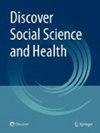COVID-19 阳性病例的家庭护理:居住环境的适宜性和病例坚持必要预防措施的能力
引用次数: 0
摘要
随着 COVID-19 病例的激增,黎巴嫩的医院不堪重负,医院护理优先考虑那些最有可能出现不良后果的 COVID-19 患者。本文旨在评估住宅环境是否适合进行家庭隔离,并探讨患者遵守所需预防措施的能力。 医护人员通过电话联系了 21 年 2 月至 2020 年 6 月底期间报告的所有 COVID-19 病例,这些病例均有轻度或中度症状,医护人员通过电话联系了这些病例,让他们填写一份标准化问卷,以评估居家护理的居住环境是否合适。住院病例在出院前必须签署同意书,保证遵守强制性预防措施。此外,还要求他们每天填写症状监测记录表。建立了向医疗机构转诊的制度,以管理健康状况恶化的病例。此外,还建立了一个合作框架,以处理违反家庭隔离规定的行为。 在接受评估的 600 个病例中,44.7%的病例被隔离在有一个入口(85.5%)、包括四至八个房间(71%)的生活楼公寓(67.2%)中。约四分之一的患者有子女(小于 5 岁),75% 的患者与老人同住。大多数病人确认有通风良好的单人间(96.2%)和独立卫生间(80.17%)。在基础设施方面,90% 以上的患者确认有饮用水和水箱水、供暖设施、电力和安全的垃圾处理设施。同样,90% 以上的患者可以获得个人卫生用品、消毒剂和个人防护设备。大部分家庭的护理设施被评为易于到达。在自我服务意识和能力方面,94.5% 的患者了解所需的预防措施,能够自我服务并遵守隔离要求。只有 51.8%的患者能够获得心理支持。 为限制感染在家庭和社区内的传播,非常有必要对 COVID-19 病例家庭护理的居住环境进行适当评估,并密切监测患者对所需预防措施的遵守情况。本文章由计算机程序翻译,如有差异,请以英文原文为准。
Home care for COVID-19 positive cases: suitability of the residential setting and ability of cases to adhere to the required preventive measures
With the upsurge of COVID-19 cases, Lebanese hospitals were overburdened and hospital care was prioritized for COVID-19 patients with the highest probability of poor outcomes. This paper aimed to assess the suitability of residential settings for home isolation and to explore the patient’s ability to adhere to the required precautions measures.
All COVID-19 cases reported between February, 21 and the end of June 2020 and who had mild or moderate symptoms, were contacted via phone calls by a healthcare professional to fill out a standardized questionnaire developed to assess the suitability of the residential setting for home care. Inpatient cases were required, before their discharge from the hospitals, to sign consent related to their adherence to the mandatory precautionary measures. They were also asked to complete, on daily basis, the symptoms monitoring log form. A referral system to health facilities was established to manage cases with worsening health status. A collaborative framework to address violations of home isolation rules was also put in place.
Of the 600 cases assessed, 44.7% of them were isolated in a living building apartment (67.2%) with one entrance (85.5%) including four to eight rooms (71%). Around one-quarter of patients have children (< 5 years) and 75% of them were living with elderly people. Most of the patients confirmed the availability of a well-ventilated single room (96.2%) and a separate bathroom (80.17%). As for infrastructure, more than 90% of patients confirmed the availability of drinking and tank water, heating facilities, electricity, and safe trash elimination. Similarly, more than 90% of them had access to personal hygiene items, disinfectants, and personal protective equipment. The bulk of homes care were rated as easily reachable. As for awareness and ability to self-serving, 94.5% of patients were knowledgeable about the required preventive measures, able to serve themselves and to adhere to the isolation requirements as well. Only 51.8% of them had access to psychological support.
Proper assessment of the residential setting for home care of COVID-19 cases combined with close monitoring of the adherence of patients to the required precaution measures are highly needed for limiting the spread of infection within the household and the community.
求助全文
通过发布文献求助,成功后即可免费获取论文全文。
去求助
来源期刊

Discover Social Science and Health
intersection of health and social sciences-
CiteScore
0.60
自引率
0.00%
发文量
21
审稿时长
22 days
期刊介绍:
Discover Social Science and Health is an interdisciplinary, international journal that publishes papers at the intersection of the social and biomedical sciences. Papers should integrate, in both theory and measures, a social perspective (reflecting anthropology, criminology, economics, epidemiology, policy, sociology, etc) and a concern for health (mental and physical). Health, broadly construed, includes biological and other indicators of overall health, symptoms, diseases, diagnoses, treatments, treatment adherence, and related concerns. Drawing on diverse, sound methodologies, submissions may include reports of new empirical findings (including important null findings) and replications, reviews and perspectives that construe prior research and discuss future research agendas, methodological research (including the evaluation of measures, samples, and modeling strategies), and short or long commentaries on topics of wide interest. All submissions should include statements of significance with respect to health and future research. Discover Social Science and Health is an Open Access journal that supports the pre-registration of studies.
Topics
Papers suitable for Discover Social Science and Health will include both social and biomedical theory and data. Illustrative examples of themes include race/ethnicity, sex/gender, socioeconomic, geographic, and other social disparities in health; migration and health; spatial distribution of risk factors and access to healthcare; health and social relationships; interactional processes in healthcare, treatments, and outcomes; life course patterns of health and treatment regimens; cross-national patterns in health and health policies; characteristics of communities and neighborhoods and health; social networks and treatment adherence; stigma and disease progression; methodological studies including psychometric properties of measures frequently used in health research; and commentary and analysis of key concepts, theories, and methods in studies of social science and biomedicine. The journal welcomes submissions that draw on biomarkers of health, genetically-informed and neuroimaging data, psychophysiological measures, and other forms of data that describe physical and mental health, access to health care, treatment, and related constructs.
 求助内容:
求助内容: 应助结果提醒方式:
应助结果提醒方式:


